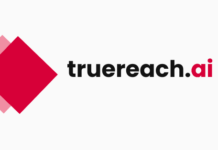The symbiotic relationship between open source and IoT is undeniable. Open source technologies have been instrumental in fuelling IoT’s growth and widespread adoption. This relationship is underpinned by the principles of accessibility, flexibility, interoperability, security, and innovation that open source brings to the IoT landscape.
The world is currently experiencing a profound transformation driven by the Internet of Things (IoT), which allows physical objects, devices, and sensors to gather, share, and act upon data via the internet. In this article, we delve into the importance of open source software in fostering the development and widespread acceptance of IoT solutions.
At its core, IoT represents the interconnectivity of everyday objects through the internet. This connectivity facilitates real-time data collection, analysis, and utilisation, revolutionising industries ranging from healthcare to agriculture, and manufacturing to smart cities.
In agriculture, IoT sensors monitor soil conditions and crop health, optimising resource utilisation. In healthcare, wearable devices enable remote patient monitoring, leading to improved health outcomes. Manufacturing benefits from predictive maintenance powered by IoT, reducing downtime and costs. These examples underscore the pervasive impact of IoT, spanning diverse sectors.
Challenges faced in IoT implementation
Despite its potential, the implementation of IoT projects presents a set of unique challenges, including:
- Security: Protecting IoT devices from cyberattacks
- Interoperability: Ensuring devices can work together
- Scalability: Handling a growing number of devices
- Data management: Efficiently handling large data volumes
- Privacy: Managing personal data and privacy concerns
- Power consumption: Optimising energy usage for battery-powered devices
- Reliability: Ensuring devices work in various conditions
- Costs: Dealing with initial and ongoing expenses
- Skills gap: Finding and retaining IoT talent
- Regulatory compliance: Meeting industry-specific regulations
- Integration: Merging IoT with existing systems
- Environmental impact: Sustainable device disposal
- Ethical considerations: Addressing data ethics and usage
The need for cost-effective and flexible solutions
Cost-effective and flexible solutions are indispensable in the IoT landscape. They ensure widespread adoption, scalability, efficient resource use, and competitiveness. These solutions accommodate innovation, support global reach, empower startups, lower total ownership costs, and promote sustainability, fostering IoT’s growth across diverse industries and applications.
While initial investment requirements may exist, cost-effective IoT solutions help minimise ongoing maintenance and operational expenses. Consequently, these solutions offer long-term benefits by reducing the total cost of ownership (TCO). Moreover, as sustainability gains increasing importance, IoT solutions contribute by reducing energy consumption and electronic waste, aligning with broader environmental goals.
Open source and IoT: A perfect match
Open source software empowers IoT developers to leverage the power of community-driven innovation while avoiding vendor lock-in.
Here are some advantages of using open source in IoT projects.
- Flexibility and customisation: IoT solutions may be easily modified to suit the specific project requirements.
- Cost-effectiveness: Open source eliminates or reduces expensive licensing costs.
- Community support: The open source community provides vast knowledge and resources for developers to seek assistance, share insights, and collaborate on IoT projects, fostering innovation and problem-solving.
Real-world examples of successful open source IoT projects
Several open source IoT projects have made a significant impact in the real world. Here are some notable examples.
- Eclipse IoT: The Eclipse IoT project is a community-driven effort providing open source IoT technologies and frameworks. It includes projects like Eclipse Paho (MQTT client), Eclipse Mosquitto (MQTT broker), and Eclipse Kura (IoT gateway). These tools are widely used in building scalable and interoperable IoT solutions.
- OpenHAB: OpenHAB is a home automation platform that can be used to manage and coordinate a wide range of smart home technologies. It supports a wide range of IoT protocols and devices, making it a popular choice for DIY smart home enthusiasts.
- Home Assistant: Home Assistant is another open source home automation platform known for its user-friendly interface and extensive support for IoT technology. It allows users to create custom automation rules and integrates with numerous smart home devices and services.
- Node-RED: Node-RED is a flow-based development tool for the visual programming of IoT applications. It simplifies the creation of IoT workflows by providing a drag-and-drop interface for connecting devices, APIs, and online services.
- Zephyr Project: The Zephyr Project is an open source, real-time operating system (RTOS) designed for resource-constrained IoT devices. It offers a lightweight and scalable platform for developing IoT applications in various industries.
- Tasmota: Tasmota is the firmware for ESP8266 and ESP32-based IoT devices, allowing users to flash their devices with open source software. It provides greater control and compatibility for devices like smart switches, lights, and sensors.
- ThingsBoard: ThingsBoard is an open source IoT platform that offers data visualisation, device management, and rule engine capabilities. It enables users to collect, process, and display IoT data in real time.
- RIOT: RIOT is an open source operating system designed for IoT. It is particularly well-suited for low-power, resource-constrained IoT devices.
- Cayenne by myDevices: This is an intuitive IoT platform with drag-and-drop widgets for sensor data visualisation and device control.
- Grafana: Grafana is a popular open source analytics and monitoring platform often used for visualising data from IoT devices and sensors.
Pros and cons of using open source hardware for IoT development
Pros
- Affordability: Open source hardware is often cost-effective, making it accessible for hobbyists, startups, and educational institutions.
- Customisability: Open source hardware can be modified and adapted to specific project requirements. This flexibility enables developers to create tailored IoT devices for unique applications.
- Community support: Many open source hardware platforms have active communities of developers and enthusiasts. This support network provides valuable resources, including documentation, tutorials, and forums for troubleshooting.
- Transparency: Open source hardware designs are typically open and transparent. Developers can access detailed schematics and design files, allowing for in-depth understanding and modification of the hardware.
- Interoperability: Open source hardware often adheres to open standards, enhancing interoperability with other devices and software.
- Rapid prototyping: Open source hardware platforms facilitate rapid prototyping, enabling developers to quickly test and iterate on IoT ideas and concepts.
Cons
- Resource constraints: Some open source hardware platforms may have limitations in terms of processing power, memory, or connectivity options.
- Hardware availability: Availability of specific open source hardware components may vary by region or over time.
- Support and longevity: While many open source hardware platforms have active communities, the longevity of community support can vary.
- Integration challenges: Integrating open source hardware with other proprietary systems or software may present challenges.
- Complexity: Some open source hardware platforms may have a steeper learning curve, particularly for beginners, requiring adequate training and resources to get started.
- Certifications: For IoT applications requiring regulatory compliance (e.g., safety or wireless certifications), open source hardware may require additional validation and testing.
IoT communication protocols and their open source alternative
IoT communication protocols are crucial for efficient and secure data exchange. Some common IoT communication protocols and their open source alternatives include:
MQTT (Message Queuing Telemetry Transport): A lightweight and efficient publish-subscribe messaging protocol widely used in IoT.
Open source alternative: Eclipse Paho provides open source MQTT client libraries for various programming languages, facilitating MQTT communication in IoT applications.
CoAP (Constrained Application Protocol): This protocol is designed for resource-constrained IoT devices and is suitable for low-power, constrained environments.
Open source alternative: Californium is an open source implementation of CoAP for Java-based IoT applications, enabling efficient communication between devices.
HTTP/HTTPS (Hypertext Transfer Protocol): While not exclusive to IoT, HTTP and HTTPS are commonly used for IoT device communication.
Open source alternative: Web servers like Apache HTTP Server and NGINX are open source and often utilised for handling HTTP(S) traffic in IoT applications.
WebSockets: This protocol enables real-time, bi-directional communication between clients and servers.
Open source alternative: Libraries like Socket.io provide open source WebSocket support for IoT applications, facilitating real-time data exchange.
LoRaWAN (Long Range Wide Area Network): This is a wireless communication protocol for long-range, low-power, IoT devices.
Open source alternative: The Things Network (TTN) is an open source, community-driven network supporting LoRaWAN deployments. It provides open access to LoRaWAN connectivity.
Bluetooth Low Energy (BLE): BLE is commonly used for short-range communication between IoT devices and smartphones.
Open source alternative: The Zephyr Project is an open source real-time operating system (RTOS) that supports BLE communication, enabling the development of custom BLE-based IoT solutions.
XMPP (Extensible Messaging and Presence Protocol): This open communication protocol is often used in IoT for real-time messaging and presence information.
Open source alternative: ejabberd is an open source XMPP server that facilitates secure, scalable, and extensible communication for IoT applications.
DDS (Data Distribution Service): This is a protocol for real-time data exchange between IoT devices, suitable for applications requiring high reliability.
Open source alternative: Eclipse Cyclone DDS is an open source implementation of the DDS protocol, providing a framework for building robust and efficient IoT systems.
Benefits of open source in IoT
- Cost-effectiveness and reduced licensing fees: Open source IoT solutions are typically cost-effective as they eliminate or significantly reduce licensing fees. This minimises the financial barriers to IoT development and deployment, allowing for wider adoption and innovation.
- Flexibility and customisation for specific IoT applications: Open source IoT software and hardware offer a high degree of flexibility and customisation. This adaptability ensures that IoT technology can be finely tuned to address unique use cases across healthcare, agriculture, industrial automation, and more industries.
- Collaboration and community support in open source IoT projects: Open source fosters collaboration among developers, researchers, and enthusiasts. IoT projects that embrace open source principles benefit from a collective effort to improve and enhance the technology. Communities formed around open source IoT projects offer valuable resources, including documentation, tutorials, forums, and peer-to-peer support. This collaborative ecosystem accelerates IoT development, encourages knowledge sharing, and helps address challenges effectively.
Case studies
Let’s take a quick look at a few real-world IoT applications based on open source.
Smart agriculture with open source IoT
- Project overview: A large-scale smart agriculture project aimed to optimise crop production and resource management on a farm.
- Open source solution: The project leveraged open source IoT platforms like Eclipse IoT and open source hardware like Raspberry Pi and Arduino for data collection and management.
Challenges faced:
- Interoperability: The farm had a mix of sensors and devices from different manufacturers. Ensuring interoperability and data integration was a challenge.
- Cost management: The project had budget constraints, making it essential to find cost-effective solutions.
Success factors:
- Eclipse IoT: Eclipse IoT provided a unified platform for connecting diverse devices and sensors, addressing the interoperability challenge.
- Community support: The open source community provided guidance and solutions, helping the team overcome technical hurdles.
- Customisation: Open source allows for tailored solutions, ensuring efficient resource management based on specific farm requirements.
Industrial IoT in manufacturing
- Project overview: A manufacturing plant sought to implement Industrial IoT for predictive maintenance and process optimisation.
- Open source solution: The project used open source IoT platforms like Node-RED and open source hardware for data acquisition.
Challenges faced:
- Legacy equipment: Integrating IoT with legacy machinery and systems presented compatibility challenges.
- Data security: Ensuring the security of sensitive manufacturing data was a top concern.
Success factors:
- Node-RED: Node-RED’s visual programming capabilities simplified the integration of IoT with existing systems.
- Community expertise: The open source community offered security best practices and solutions to safeguard data.
- Cost savings: Open source solutions minimised licensing costs, allowing the project to allocate resources effectively.
Smart city IoT deployment
- Project overview: A city government aimed to create a smart city infrastructure for improved public services and urban planning.
- Open source solution: The project adopted open source IoT platforms like Eclipse IoT and Combin, and technology for long-range connectivity.
Challenges faced:
- Scalability: Deploying IoT sensors and gateways across the entire city required a scalable and cost-effective solution.
- Data management: Managing and analysing vast amounts of sensor data for urban planning posed a significant challenge.
Success factors:
- LoRaWAN: LoRaWAN’s long-range capability reduced the number of gateways needed, addressing scalability concerns.
- Eclipse IoT: Eclipse IoT’s data management and analytics tools enabled efficient data processing and urban insights.
- Open standards: The use of open standards ensured interoperability and flexibility in expanding the smart city infrastructure.
Addressing the challenges
Addressing challenges when using open source IoT is crucial to ensure the success and security of the projects. Here are some key points to consider.
Potential challenges of using open source in IoT and how to address them
- Interoperability: The IoT ecosystem often comprises diverse devices and protocols. Ensuring interoperability between open source components and proprietary systems can be challenging. Implementing open standards and protocols can help mitigate this challenge.
- Community support: While open source communities can be a valuable resource, the level of support may vary. Organisations should assess the strength and responsiveness of the community behind the chosen open source projects.
- Integration complexity: It might be difficult to combine open source IoT solutions with pre-existing IT frameworks and legacy systems. A well-defined integration strategy and architecture are essential to overcome this challenge.
Security concerns and how to mitigate them
- Vulnerabilities: Open source software may have vulnerabilities that can be exploited. Regularly monitoring for security updates and applying patches promptly is critical.
- Authentication and access control: IoT infrastructure and data can be protected from hackers by using multi-factor authentication and other access restrictions. Open source solutions often provide security features but require proper configuration.
- Data encryption: Data transmitted between IoT devices and servers must be encrypted using secure protocols like TLS/SSL to protect against eavesdropping and data breaches.
- Device security: IoT devices should be secured by regularly updating their firmware, changing default passwords, and implementing device-level security measures.
Scalability and maintenance considerations
- Scalability planning: IoT solutions must be designed to handle growth. Consider how open source components can scale with increasing device deployments and data volume. Evaluate cloud-based solutions if needed.
- Data management: As IoT generates vast amounts of data, consider how data will be stored, processed, and analysed. Scalable databases and data analytics tools may be necessary.
- Maintenance: Regularly maintain and update open source components to ensure they remain secure and compatible with evolving standards. Establish a clear maintenance schedule and procedures.
- Vendor lock-in: Avoid vendor lock-in by selecting open source technologies with a strong community and a clear roadmap. This ensures long-term support and prevents reliance on a single vendor.
The future of IoT and open source
Predictions for the future of IoT adoption
- Massive expansion: IoT adoption is expected to grow exponentially across industries, including healthcare, agriculture, smart cities, and manufacturing. The proliferation of connected devices will contribute to the digital transformation of businesses and societies.
- Edge computing dominance: Edge computing will play a pivotal role in IoT as organisations seek to process data closer to the source. This will reduce latency, improve real-time decision-making, and enhance security.
- AI and machine learning integration: IoT devices will increasingly incorporate AI and machine learning capabilities, enabling them to analyse data locally and make intelligent decisions autonomously. This trend will lead to more efficient IoT systems.
How open source is likely to evolve in the IoT space
- Greater proliferation: Open source will continue to play a significant role in IoT development due to its accessibility, flexibility, and cost-effectiveness. More open source IoT projects and frameworks will emerge, covering a broader range of applications.
- Standardisation and interoperability: Open source initiatives will focus on standardisation and interoperability, aiming to create common protocols and frameworks that facilitate seamless communication between IoT devices and platforms.
- Security enhancements: Open source security tools and practices will evolve to address the growing threat landscape in IoT. Enhanced security measures will become standard, including secure boot mechanisms and device identity management.
- Edge and fog computing: Open source projects for edge and fog computing will become more prevalent, empowering developers to build efficient, decentralised IoT solutions that reduce the load on centralised cloud servers.
Opportunities for further growth and innovation
- Industry-specific solutions: Open source IoT will enable the creation of industry-specific solutions, such as precision agriculture, personalised healthcare, and smart manufacturing. These tailored solutions will drive innovation and efficiency within sectors.
- Open hardware ecosystem: The growth of open source hardware, like Raspberry Pi and Arduino, will continue. This will provide hardware developers with a strong foundation for building IoT devices, reducing development costs, and fostering innovation.
- Data monetisation: Organisations will explore new ways to monetise IoT-generated data, including data marketplaces and data-as-a-service models. Open source platforms will facilitate data sharing while preserving privacy and security.
- Cross-domain integration: IoT and open source will converge with other technologies like blockchain and AI to create integrated, cross-domain solutions. For example, blockchain can enhance IoT device identity and data integrity.
Open source is the cornerstone of IoT development, offering the tools and frameworks necessary to create scalable, secure and customised solutions. By embracing open source, businesses and developers can overcome barriers, reduce costs, enhance security, and tap into a vibrant community of innovators. Open source is not merely an option; it is the pathway to unlocking the transformative potential of IoT, driving progress, and creating a more interconnected and intelligent world.
















































































